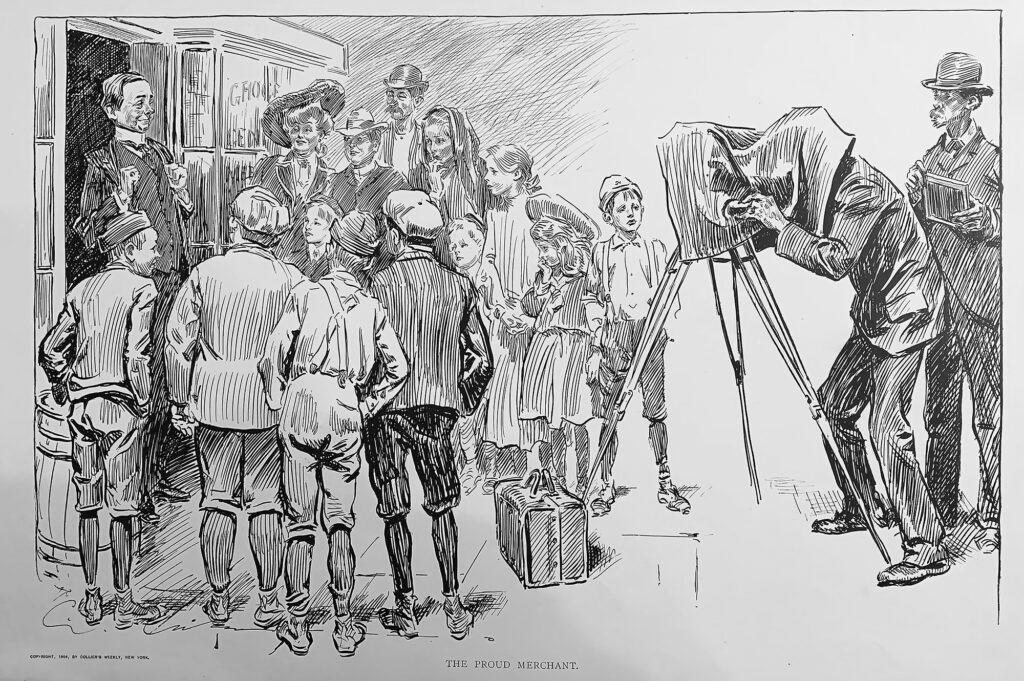
A few weeks back, I was exploring an antique barn in Newburyport, MA, when I came upon this print by Charles Dana Gibson 1867-1944 entitled the “The Proud Merchant.” Gibson was, of course the artist famous of the turn of the (twentieth) century Gibson Girl – the ideal beauty of the age. I indeed, love these upper class babes with their tight waists and long, flawless, and elegant necks. I have a photograph of my grandmother as a “Gibson Girl” with her lovely shirtwaist.
Dana also is famous for street scenes and faces. Figure 1 falls into that category. The illustration is from Colliers c1904 and depicts a “Proud Merchant” having a photograph taken in front of his shop. It teaches us a lot about portrait photography in an age when it was still scarcely available and therefore intriguing to an assembled crowd – a big event! Note, of course the camera bag, the tripod, the black cloth, and the assistant ready with the next plate for the view camera. What is interesting to me is the evolution of the camera’s form that begins perhaps with the camera obscura. It is essentially a box with a lens, and if you think closely has not changed that much over the years, except perhaps for the polaroid instant cameras, where the goal was to make something “futuristic.” What could be better than a mountain of failed and sticky instant failures at $1.00 a pop all over the floor?
I think of my iPhone as the descendant of the view camera of old. I felt the same way about my father’s Ciroflex 2 1/4 x 2 1/4 twin lens reflex. The act of setting the composition is so much more thoughtful than with today’s DSLRs. Both cellphone cameras and DSLRs bear with them a sense of the photograph costing one nothing, unless you factor in the growing entropy of the universe. In 1904 creation of a photograph was a precious and time consuming process. Yet, Eastman had introduced the Kodak Brownie in 1888 and the democratization of photography had already begun.
